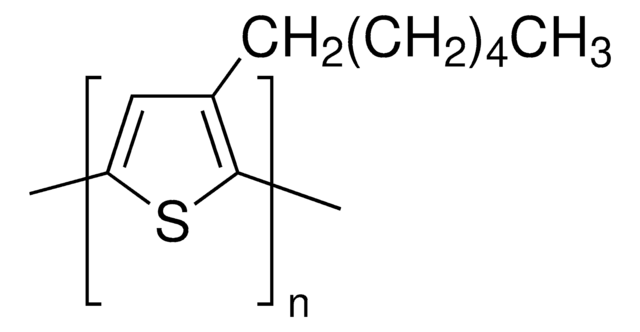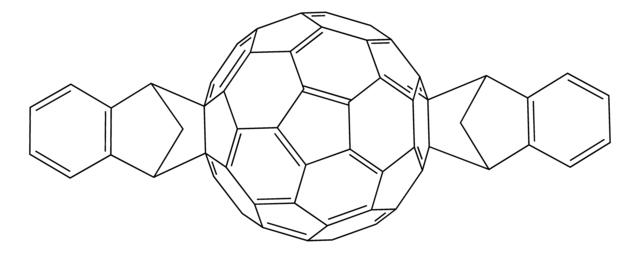906387
ITIC-Cl
Sinónimos:
3,9-bis(2-methylene-((3-(1,1-dicyanomethylene)-6,7-dichloro)-indanone))-5,5,11,11-tetrakis(4-hexylphenyl)-dithieno[2,3-d:2′,3′-d′]-s-indaceno[1,2-b:5,6-b′]dithiophene, ITIC-2Cl
About This Item
Productos recomendados
description
Band gap: 1.48 eV
assay
98%
form
powder
orbital energy
HOMO -5.68 eV
LUMO -4.20 eV
SMILES string
[s]1c2c([s]c(c2)\C=C%14/C(=O)c%15c(cc(c(c%15)Cl)Cl)C/%14=C(C#N)C#N)c3c1c4c(cc7c(c4)C(c%10c%11[s]c(cc%11[s]c%107)\C=C%12\C(=O)c%13c(cc(c(c%13)Cl)Cl)C\%12=C(C#N)C#N)(c9ccc(cc9)CCCCCC)c8ccc(cc8)CCCCCC)C3(c6ccc(cc6)CCCCCC)c5ccc(cc5)CCCCCC
InChI
1S/C94H78Cl4N4O2S4/c1-5-9-13-17-21-55-25-33-61(34-26-55)93(62-35-27-56(28-36-62)22-18-14-10-6-2)75-45-72-76(46-71(75)89-85(93)91-81(107-89)43-65(105-91)41-73-83(59(51-99)52-100)67-47-77(95)79(97)49-69(67)87(73)103)94(63-37-29-57(30-38-63)23-19-15-11-7-3,6
InChI key
CGRWDQBQNINDAH-WJLAHIJSSA-N
General description
Application
Storage Class
11 - Combustible Solids
wgk_germany
WGK 3
flash_point_f
Not applicable
flash_point_c
Not applicable
Elija entre una de las versiones más recientes:
Certificados de análisis (COA)
It looks like we've run into a problem, but you can still download Certificates of Analysis from our Documentos section.
Si necesita más asistencia, póngase en contacto con Atención al cliente
¿Ya tiene este producto?
Encuentre la documentación para los productos que ha comprado recientemente en la Biblioteca de documentos.
Los clientes también vieron
Artículos
The emerging organic photovoltaic (OPV) technology is very promising for low-cost solar energy production. OPV devices can be produced using high-throughput, large-volume printing methods on lightweight and flexible plastic substrates, making them easy to deploy and use in innovative ways.
The emerging organic photovoltaic (OPV) technology is very promising for low-cost solar energy production.
Professor Chen (Nankai University, China) and his team explain the strategies behind their recent record-breaking organic solar cells, reaching a power conversion efficiency of 17.3%.
Nuestro equipo de científicos tiene experiencia en todas las áreas de investigación: Ciencias de la vida, Ciencia de los materiales, Síntesis química, Cromatografía, Analítica y muchas otras.
Póngase en contacto con el Servicio técnico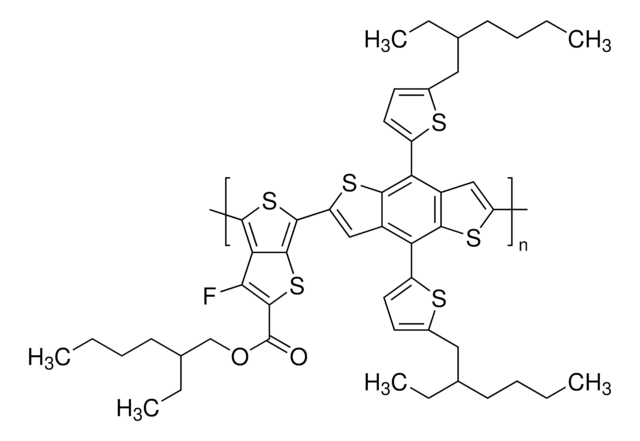
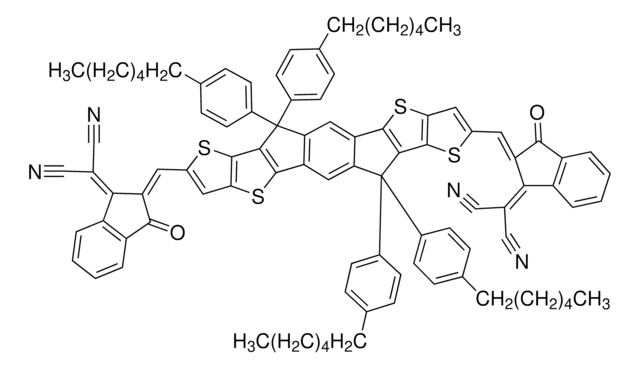
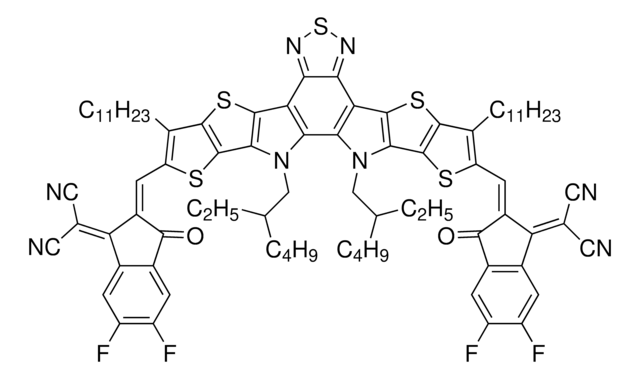


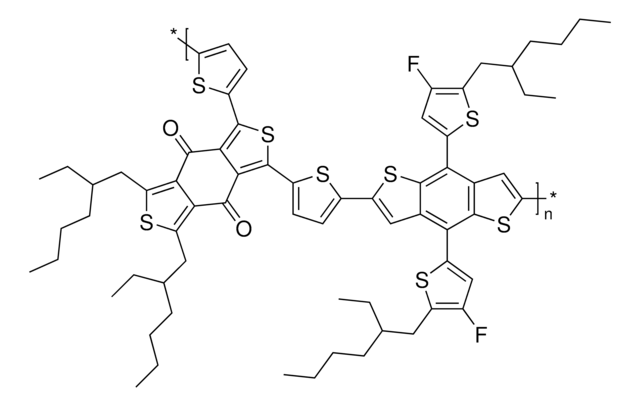
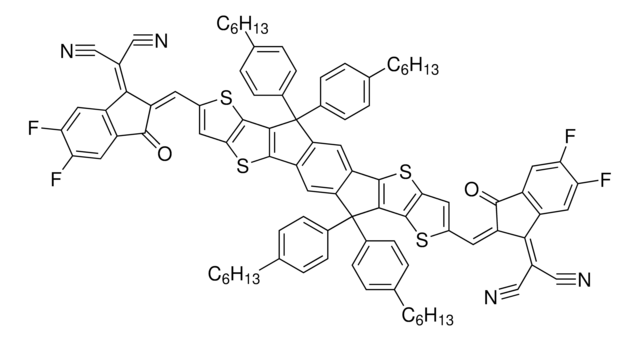
![[6,6]-Phenyl C71 butyric acid methyl ester 99%](/deepweb/assets/sigmaaldrich/product/structures/716/624/9fb9f2f0-ae99-429f-8d3a-b12267976a4d/640/9fb9f2f0-ae99-429f-8d3a-b12267976a4d.png)
